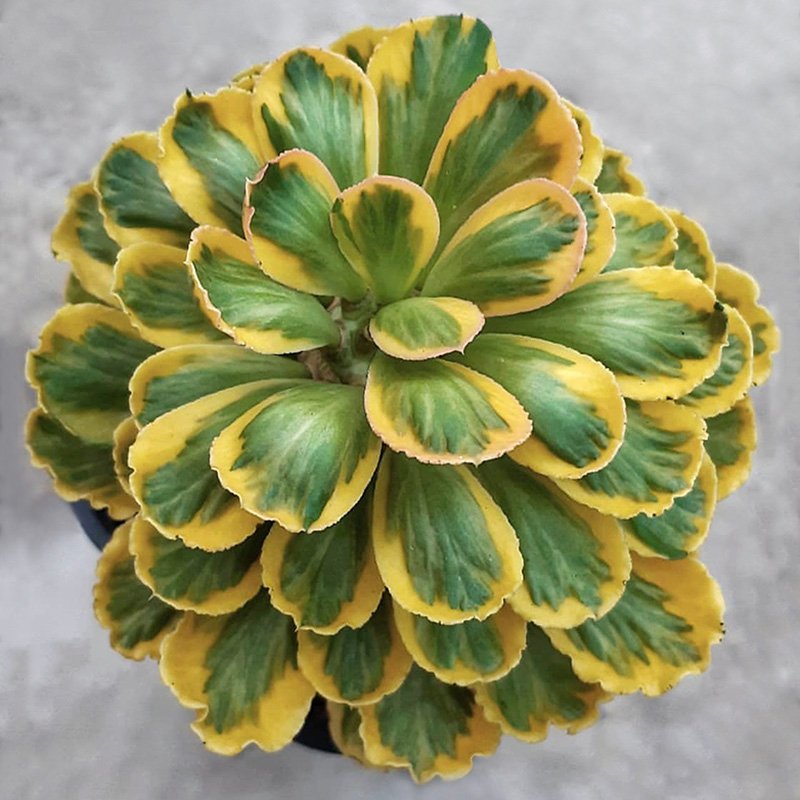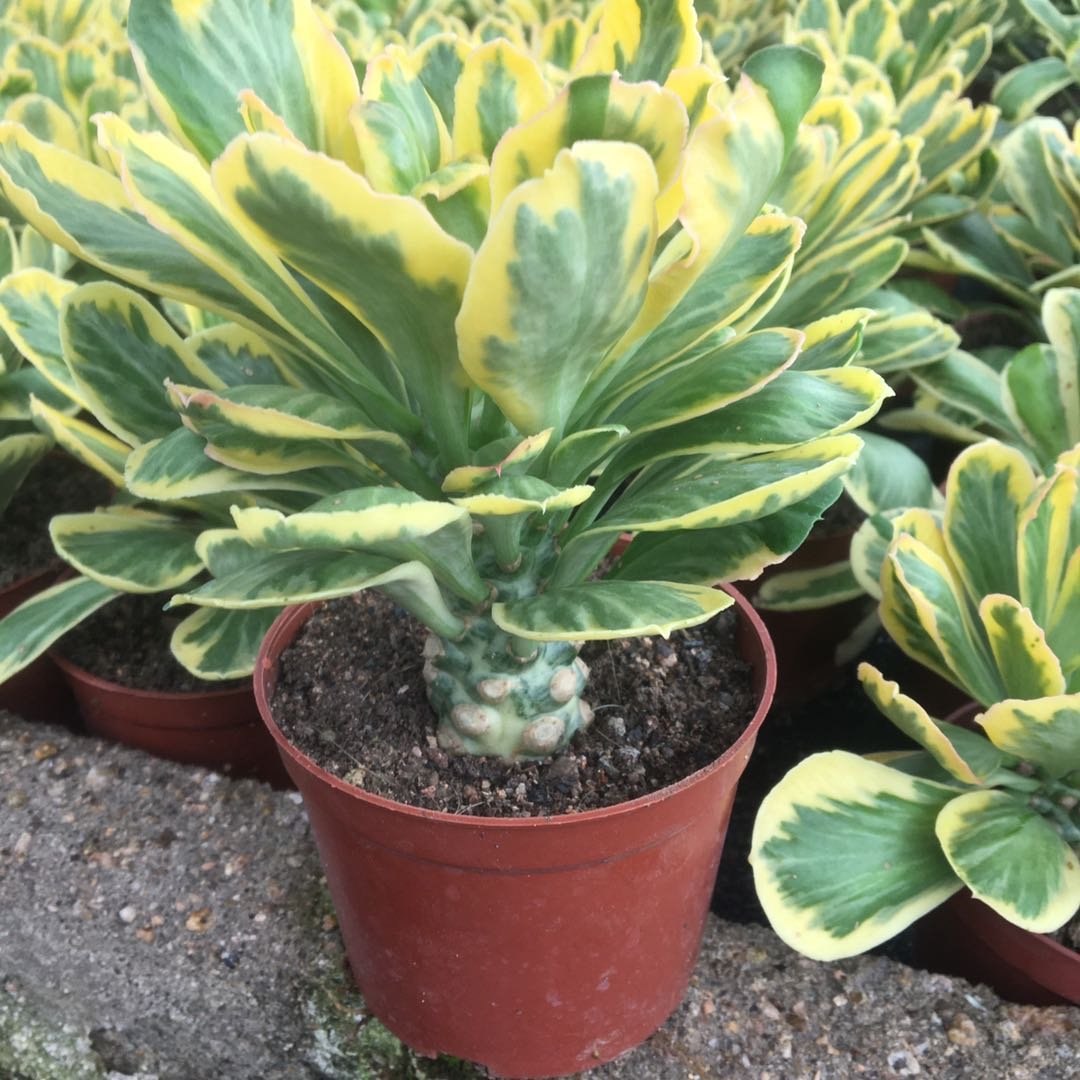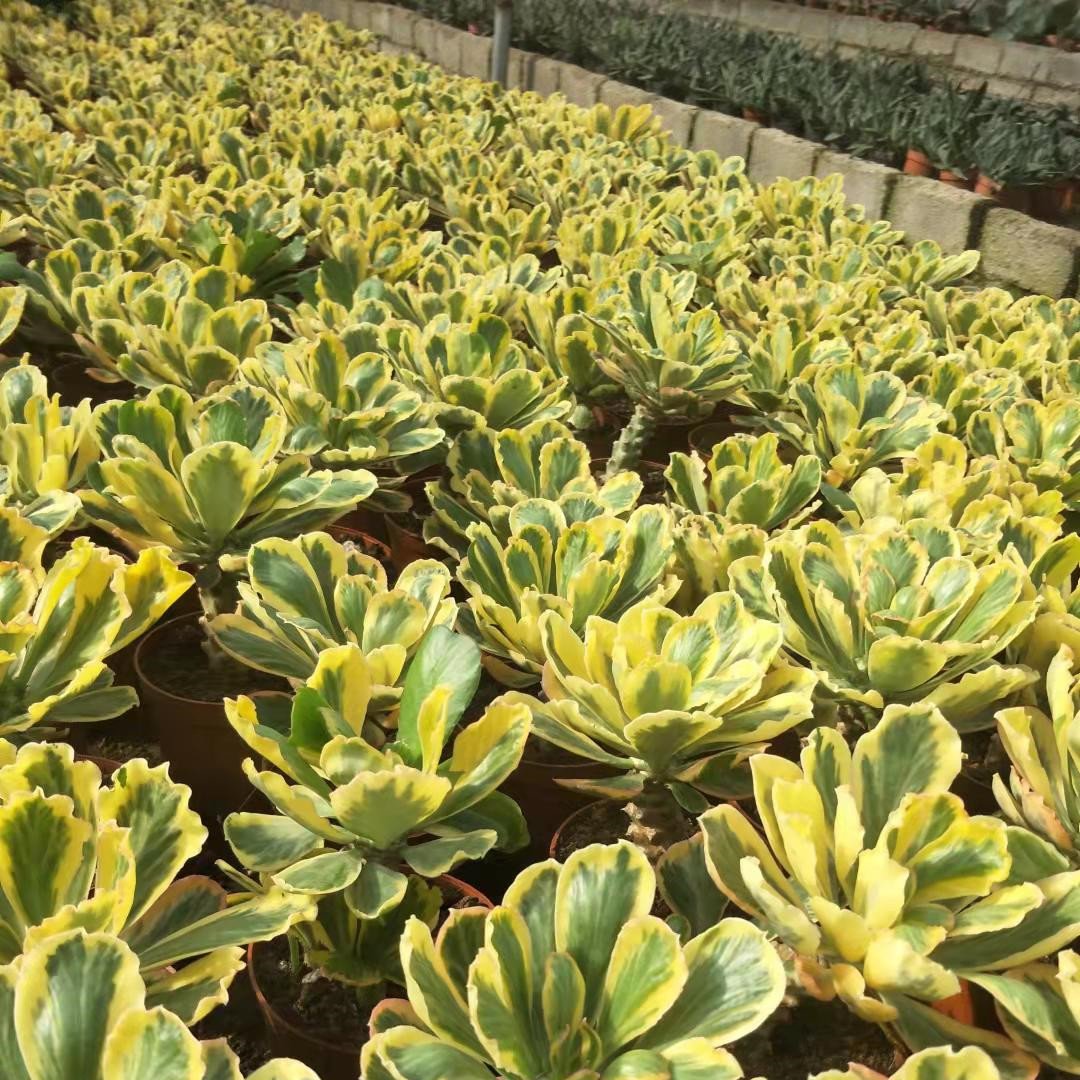
To grow euphorbia poissonii variegata at home, use soil that drains well. Give it lots of bright sunlight. Do not water it too much. Keep it in a warm place. Be careful when you touch this euphorbia. Its sap can make your skin hurt. Euphorbia poissonii has colorful stems. It does not need much water. This succulent grows well if you water it only a little. Keep it safe from cold weather. Pay close attention to your plant. Watch for any changes. Change how you care for it if needed.
Key Takeaways
- Use well-draining soil like cactus mix and pots with drainage holes to keep roots healthy and prevent rot.
- Give your euphorbia plenty of bright, direct sunlight daily to keep its colors vibrant and stems strong.
- Water sparingly every 2-3 weeks during growing season and less in winter; always let the soil dry before watering again.
- Keep the plant warm between 65°F and 85°F and protect it from cold drafts or sudden temperature changes.
- Always wear gloves when handling the plant to avoid skin irritation from its sap, and keep it away from children and pets.
Soil for Euphorbia poissonii variegata

Soil Mix
You need to give euphorbia poissonii the right soil to help it grow strong. This plant likes a soil that dries out fast. You should use a cactus or succulent mix. These mixes drain water quickly and keep roots healthy. If you do not have a special mix, you can make your own. Mix regular potting soil with perlite or sand. This creates a well-drained sandy soil. Roots will not sit in water, so you lower the risk of rot.
Tip: Always check the soil before you water. If the top two inches feel dry, it is time to water. If the soil feels damp, wait a few more days.
Pot and Drainage
Choosing the right pot is just as important as picking the right soil. Euphorbia poissonii needs a pot with drainage holes. These holes let extra water escape. If water stays in the pot, roots can rot. Ceramic pots work well because they do not hold too much moisture. Plastic pots can also work, but you must watch the soil closely.
- Use pots with drainage holes to stop water from building up.
- Pick ceramic pots if you want less moisture around the roots.
- Remove any dead or sick leaves to keep your euphorbia poissonii healthy.
- Water sparingly and let the soil dry out between waterings.
You should water euphorbia poissonii every 2-3 weeks during the growing season. In winter, water even less. Always let the soil dry out before you water again. This routine keeps your euphorbia poissonii variegata safe from root rot and fungal problems.
Light Needs for Euphorbia
Sunlight
Euphorbia poissonii needs a lot of bright, direct sunlight to grow well. You should place your plant where it can get the most light each day. Sunlight helps the stems keep their color and shape. If your euphorbia poissonii does not get enough light, it may look pale or grow slowly. Too little light can also make the plant weak.
You should avoid putting euphorbia poissonii in dark corners or rooms with little sunlight. This plant does not like low light. If you see the stems stretching or turning pale, move the plant to a brighter spot. Direct sunlight is best, but you must watch for signs of sunburn. If the stems look scorched, use a sheer curtain to soften the light.
Tip: Rotate your euphorbia poissonii every couple of weeks. This helps all sides of the plant get even sunlight and keeps the growth balanced.
Placement
You can place euphorbia poissonii less than one foot from a bright, sunny, south-facing window. This spot gives the plant the most light. South-facing windows work best, but east- or west-facing windows can also support healthy growth. If you use an east- or west-facing window, make sure the plant still gets several hours of direct sunlight each day.
Here are some placement tips for your euphorbia poissonii:
- Keep the plant close to a south-facing window for maximum light.
- Use sheer curtains if the sunlight is too strong to prevent burns.
- Place the plant a few feet away from the window if you notice any scorching.
- Rotate the plant every two weeks to help it grow evenly.
- If your home does not get enough natural light, use a grow light for at least 12 hours each day.
Proper lighting keeps your euphorbia poissonii healthy and colorful. Good light prevents weak stems and pale colors. If you follow these steps, your euphorbia will thrive indoors.
How to Care for Euphorbia poissonii
Watering
You need to pay close attention to the water requirements of euphorbia poissonii. This succulent does not like to sit in wet soil. During the active growing season, you should keep the soil slightly moist. Water your euphorbia every two to three weeks, but always check the top two inches of soil first. If the soil feels dry, it is time to water. If it feels damp, wait a few more days.
Tip: Use a watering can with a narrow spout. This helps you direct water to the base of the plant and keeps the stems dry.
In winter, reduce watering. Euphorbia poissonii grows slowly or stops growing in cold months. You should let the soil dry out more between each watering. Never let the soil become bone dry for long periods, but do not keep it soggy. Signs of overwatering include yellowing stems, mushy roots, and a foul smell from the soil. If you see these signs, stop watering and let the soil dry out completely before you water again.
Temperature
Euphorbia poissonii likes warm temperatures. You should keep your plant in a room that stays between 65°F and 85°F (18°C to 29°C). This range helps the plant grow strong and healthy. If the temperature drops below 50°F (10°C), euphorbia poissonii can get damaged. Cold drafts and sudden temperature changes can also harm the plant.
- Place your euphorbia away from open windows in winter.
- Keep it away from air conditioners or heaters.
- Move the plant to a warmer spot if you notice slow growth or soft stems.
If you live in a place with cold winters, bring your euphorbia inside before the temperature drops. Warmth helps this succulent stay healthy all year.
Fertilizer
Euphorbia poissonii does not need much fertilizer. You can feed your plant once a month during the growing season, which is spring and summer. Use a balanced, water-soluble fertilizer made for succulents. Mix the fertilizer at half strength to avoid burning the roots.
Note: Do not fertilize in fall or winter. The plant rests during these months and does not need extra nutrients.
Too much fertilizer can cause weak, leggy growth. Always follow the instructions on the fertilizer package. If you see white crust on the soil, flush the soil with water to remove extra salts.
Dormancy
Euphorbia poissonii enters a rest period in the cooler months. During dormancy, the plant stops growing and uses less water and nutrients. You should reduce watering and stop feeding during this time. Keep the plant in a bright spot, but avoid cold drafts.
- Watch for signs of dormancy, such as slower growth and less water uptake.
- Let the soil dry out more between waterings.
- Resume regular care when new growth appears in spring.
Caring for euphorbia poissonii variegata during dormancy helps the plant recover and prepare for the next growing season. If you follow these steps, you will learn how to care for euphorbia poissonii and keep your plant healthy year-round.
Euphorbia poissonii variegata Problems & Safety
Common Issues
You may notice some problems with euphorbia poissonii. Pests like spider mites, thrips, scale insects, and mealybugs can attack your plant. If you see tiny webs or sticky spots, check for these pests. Neem oil or insecticidal soap works well against spider mites and thrips. For scale insects and mealybugs, use alcohol swabs to wipe them away. Sticky traps help you catch thrips and whiteflies. You can also use ladybugs or parasitic wasps to control pests naturally. If you see fungus gnats, try beneficial nematodes.
Overwatering causes yellow stems, mushy roots, and a bad smell. Always let the soil dry before you water again. Remove any dead or rotting parts to keep your euphorbia poissonii healthy. Regularly inspect your plant and keep the area clean to prevent problems.
Toxicity and Handling
Euphorbia poissonii variegata has a milky sap that can irritate your skin. Always wear gloves when you handle or prune this plant. If the sap touches your skin, wash it off with soap and water right away. If sap gets in your eyes, get medical help quickly. Keep euphorbia poissonii out of reach of children and pets. The sap is mildly toxic, so you must be careful. Some people react more strongly to the sap than others.
Tip: Always use gloves and wash your hands after working with euphorbia poissonii.
Cleaning and Maintenance
Dust can build up on the stems of euphorbia poissonii. Use a soft, dry brush or a gentle cloth to clean the plant. Do not use too much water when cleaning, as this can cause rot. Make sure you support the stems while you clean to avoid breaking them. Clean your tools after use, especially if they touch the sap. This keeps your plant healthy and your home safe.
Keeping your euphorbia poissonii variegata clean helps it absorb more light and stay healthy.
Propagation of Euphorbia poissonii

Cuttings
You can easily grow new euphorbia plants from cuttings. Start by choosing a healthy stem or offset from your main plant. Use a clean, sharp knife or scissors to make a cut. Always wear gloves because the sap can irritate your skin. After you cut the stem, you will see a milky white sap. Rinse the cut area with water to remove the sap. This step helps protect you and keeps the cutting healthy.
Let the cutting dry in a shaded place for about one week. The cut surface needs time to heal and form a callus. This drying period is important. It helps prevent rot when you plant the cutting. Do not rush this step. A well-dried cutting will root better and stay healthy.
Tip: Place the cutting on a paper towel or tray in a spot with good air flow. Keep it away from direct sunlight while it dries.
Rooting Tips
Once the cut end has dried, you can plant your euphorbia cutting. Use a pot filled with a very well-draining mineral substrate. Cactus or succulent soil works well. You can also mix sand or perlite into regular soil to improve drainage. Gently press the cutting into the soil. Do not water right away. Wait a few days before you add water. This helps the cutting settle and lowers the risk of rot.
Keep the pot in light shade while the roots grow. Too much sun can stress the new cutting. Water the soil lightly during the growing season. Do not let the soil stay wet. Feed the plant with a diluted succulent fertilizer once a month. Watch for new growth. When you see it, you know the cutting has rooted.
Growing euphorbia from cuttings lets you expand your collection and share plants with friends. With patience and care, you will see strong new plants in a few weeks.
Taking care of Euphorbia poissonii variegata at home is simple if you follow some easy steps. Here is a quick guide:
| Aspect | Key Care Tips |
|---|---|
| Light | Give it 6-8 hours of bright sunlight each day. Put it near a south window if it is inside. |
| Watering | Water every 2-3 weeks. Water less in winter. Do not let the soil get soggy. |
| Soil | Use sandy or cactus soil that drains well. Make sure the pot has drainage holes. |
| Temperature | Keep it warm, between 65 and 85°F. Protect it from cold drafts. |
| Safety | Always wear gloves. Keep the plant away from kids and pets. |
Sometimes, the plant can get sunburned or grow slowly after resting. Watch your plant often and change how you care for it if needed. If you have questions, join plant groups to get help and tips. Growing this special euphorbia gives you bright colors and makes your home look nice.
FAQ
How often should you repot Euphorbia poissonii variegata?
You should repot every 2-3 years or when roots fill the pot. Choose a slightly larger pot with drainage holes. Fresh soil helps your plant grow strong and healthy.
Can you grow Euphorbia poissonii variegata outdoors?
You can grow it outdoors if you live in a warm, frost-free area. Place it in a spot with bright sunlight. Bring it inside if temperatures drop below 50°F.
Why are the stems turning yellow or soft?
Yellow or soft stems usually mean overwatering. Let the soil dry out before you water again. Remove any damaged parts. Check that your pot drains well.
Is Euphorbia poissonii variegata safe for pets?
No, this plant is not safe for pets. The sap can irritate skin and cause stomach upset if eaten. Keep your plant out of reach of pets and children.
How do you encourage more colorful variegation?
Give your plant plenty of bright, direct sunlight. Good light helps the colors stay bold. Rotate your plant often so all sides get sun. Avoid low-light spots.